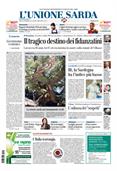But can you compare a nice breaded cutlet?
Traveling with Luca Cesari around the world in search of one of the most beloved dishesPer restare aggiornato entra nel nostro canale Whatsapp
Everyone has their own ideal cutlet in mind. But be careful: there's not just one. Some people like it bone-in, others prefer it thin and crispy, some call it Schnitzel, and some call it Tonkatsu.
In his essay "World History of the Cotoletta" (Il Saggiatore, 2025, pp. 312, also available as an ebook), food historian Luca Cesari describes a surprising pilgrimage to the heart of our food traditions , from local mythologies to global influences, showing us how many universes lie beneath a simple breading. Because, let's face it: the breaded cotoletta has become fashionable in recent decades and therefore subject to fleeting tastes. It's easy to find it garnished with cherry tomatoes and arugula, or even covered in cheese. Purists, however, don't even accept the meat being beaten to the point of creating the trendy elephant ear, and there are even those who question the use of lemon, which certainly has little in common with the "good old days," when citrus fruits were a luxury for the few. In short, a real "confusion" for a dish considered a symbol of local gastronomy, a "typical" product contested between Austria and Lombardy and proudly claimed by both.
But is pride enough, or is there some glimmer of truth in these claims?
Milan, then, firmly (and with some justification) asserts its claim to the paternity of the breaded cutlet, at least as far as Italy is concerned. The 18th-century Enlightenment thinker Pietro Verri, in his book Storia di Milano, discusses an episode that occurred on September 17, 1134, in the Milanese Basilica of Sant'Ambrogio. That day marked the celebration of Saint Satiro, a prominent saint in the Middle Ages, and a banquet was held in the basilica that included a dish called lombolos cum panitio, a slice of breaded meat. According to culinary experts, it was likely a veal cutlet rather than our cutlet. It is, however, certain that breading was already common in the Middle Ages . Indeed, it is likely that among noble families it was common to coat food with gold dust. Poor people, however, obtained the golden coating by mixing breadcrumbs and egg yolk and frying the mixture in butter. The first mention of the cotoletta in a Lombard recipe book, however, is much later. It appears in the Milanese-Italian dictionary published in 1814 by Francesco Cherubini.
Also in the mid-19th century, during the period when Lombardy was seeking independence from the Austrian Empire, a rivalry arose between the Milanese cutlet and its Viennese counterpart, the Wiener Schnitzel. To support Italy's primacy, a story spread, likely a partisan one, about a letter written by Count Attems, aide-de-camp to the Austrian Emperor Franz Joseph. After a dinner at the Milanese residence of the famous General Radetsky, Attems wrote extolling an extraordinary dish "made of veal breaded in egg and fried in butter." The praises reportedly reached the emperor, prompting him to import the delicacy to the Viennese court. Legends, of course, given that dishes similar to the Wiener Schnitzel are mentioned in 18th-century Austrian recipe books. Furthermore, the Milanese and the Viennese are very different . The former uses veal, is thick and bone-in, and is fried in butter. The second is always thin, made from pork, and was originally cooked in lard. In short, the dispute between Lombardy and Austria over breaded steak could continue indefinitely and spread to other countries, given that breaded ribs were already in use in 18th-century France, and were introduced to Italy in the early 19th century. They were called "French Revolution cutlets," and according to some experts, they were imported by chefs accompanying Napoleon's armies or by Maria Luisa of Austria, Napoleon's wife and later Duchess of Parma. In reality, these transalpine "cutlets" were marinated in melted butter mixed with herbs, salt, pepper, and cloves, then coated in flour and beaten egg before being fried. They were therefore only distant relatives of the classic Milanese.
Ultimately, a universe of traditions, stories, habits, and tastes revolves around the cutlet. Leafing through dusty recipe books and delving into the details of forgotten religious banquets, analyzing ancient trial records, and peering into the home kitchens of bygone eras, Cesari reveals a surprising truth: what we believe to be written in stone has never been written in stone, the indisputable certainties about food and identity are almost always legends constructed for propaganda purposes, and a slice of breaded and fried meat can reveal the history of Europe; and, by extension, of the entire world. The cutlet, therefore, has as many homelands as it has variations, defining itself through constant contaminations and transformations, and few certainties can be reached: it pleases everyone, or almost everyone, and it inspired Gualtiero Marchesi to make a simple admission: "I love the cutlet very much, but I wish I had invented it."
